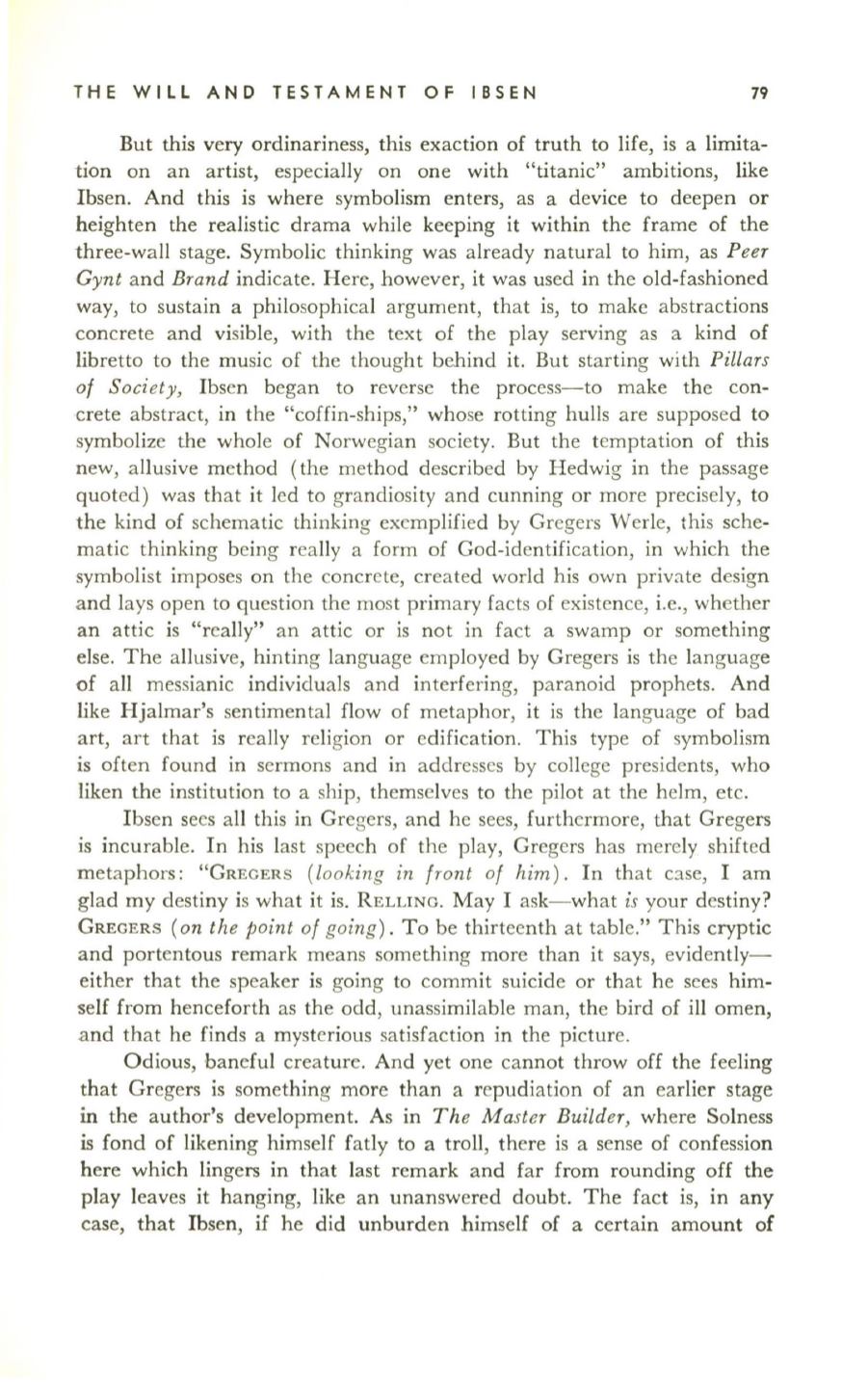
THE WILL AND TESTAMENT OF IBSEN
79
But this very ordinariness, this exaction of truth to life, is a limita–
tion on an artist, especially on one with "titanic" ambitions, like
Ibsen. And this is where symbolism enters, as a device to deepen or
heighten the realistic drama while keeping it within the frame of the
three-wall stage. Symbolic thinking was already natural to him, as
Peer
Gynt
and
Brand
indicate. Here, however, it was used in the old-fashioned
way, to sustain a philosophical argument, that is, to make abstractions
concrete and visible, with the text of the play serving as a kind of
libretto to the music of the thought behind it. But starting with
Pillars
of Society,
Ibsen began to reverse the process-to make the con–
crete abstract, in the "coffin-ships," whose rotting hulls are supposed to
symbolize the whole of Norwegian society. But the temptation of this
new, a llusive method (the method described by Hedwig in the passage
quoted) was that it led to grandiosity and cunning or more precisely, to
the kind of schematic thinking exemplifi ed by Gregers Werle, this sche–
matic thinking being really a form of God-identification, in which the
symbolist imposes on the concrete, created world his own private design
a nd lays open to question the most primary facts of existence, i.e., whether
an attic is "really" an attic or is not in fact a swamp or something
else. The allusive, hinting language employed by Gregers is the language
of all messianic individuals and interfering, paranoid prophets. And
like Hjalmar's sentimental flow of metaphor, it is the language of bad
art, art that is really religion or edification. This type of symbolism
is often found in sermons and in addresses by college presidents, who
liken the institution to a ship, themselves to the pilot at the helm, etc.
Ibsen sees all this in Gregers, and he sees, furthermore, that Gregers
is incurable. In his last speech of the play, Gregers has merely shifted
metaphors: "GREGERS
(looking in front of him).
In that C:ise, I am
glad my destiny is what it is. RELLING. May I ask- what
is
your destiny?
GREGERS
(on the point of going).
To be thirteenth at table." This cryptic
and portentous remark means something more than it says, evidently–
either that the speaker is going to commit suicide or that he sees him–
self from henceforth as the odd, unassimilable man, the bird of ill omen,
a nd that he finds a mysterious satisfaction in the picture.
Odious, baneful creature. And yet one cannot throw off the feeling
that Gregers is something more than a repudiation of an earlier stage
in
the author's development. As in
The Mast er Builder,
where Solness
is
fond of likening himself fatly to a troll, there is a sense of confession
here which lingers in that last remark and far from rounding off the
play leaves it hanging, like an unanswered doubt. The fact is, in any
case, that Ibsen,
if
he did unburden himself of a certain amount of


